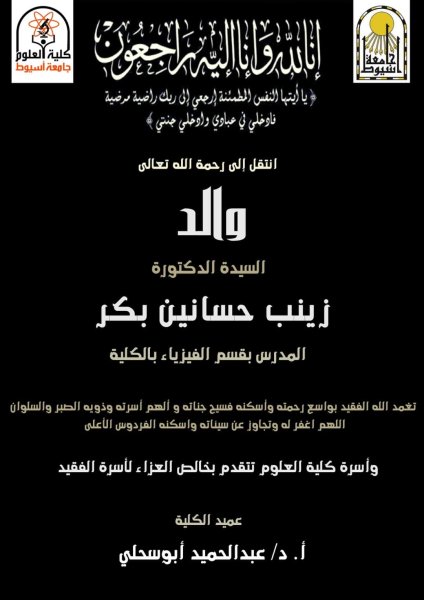
?أكد الدكتور أحمد المنشاوي رئيس جامعة أسيوط، أن البرامج الدراسية التي تقدمها الجامعة؛ تقوم على مفهوم سد الفجوة المعرفية، وتخريج طلاب يتمتعون بنفس مستوى طلاب الجامعات العالمية المتقدمة، مما تمثل خطوة كبيرة للدخول فى عصر جديد وفق مفهوم تخريج طالب دولى، وفي إطار ذلك، تقدم الجامعة؛ باقة متنوعة من البرامج الدراسية الفريدة والمميزة خلال العام الدراسي 2024|2025.
?تقدم كلية العلوم بجامعة أسيوط؛ برنامج "بيوتكنولوجيا النبات والميكروبيولوجي"؛ والذي يعد واحداً من البرامج المميزة لمرحلة البكالوريوس، ويهدف إلى تقديم حلول تعتمد على بيوتكنولوجي النبات والميكروبيولوجي؛ للقضايا المتعلقة بالتنمية في القطاعات الصناعية، والزراعية، والبيئية.
? البرنامج يقبل الطلاب الحاصلين على الثانوية العامة شعبة (علمي علوم) بالمستوى الأول، وكذلك يجوز للطالب الذي اجتاز المستوى الأول بكليات العلوم في أي من الجامعات المصرية، أو الأجنبية الالتحاق بالبرنامج.
?يتيح البرنامج لخريجيه مجالات عمل عدة، منها:-
▪️المجال الطبي: والذي يتضمن؛ صناعة الأدوية، ومضادات الأورام، واللقاحات، والأجسام المضادة، والهرمونات، واستخراج الأنسولين من النباتات، إلى جانب العمل فى المستشفيات، ومعامل التحاليل الطبية؛ لتحليل الأنسجة والخلايا، والشركات الصناعية المنتجة للمواد الكيماوية، والبروتينات، والألياف، والفيتامينات، ومعامل ضمان الجودة بالمصانع المختلفة.
▪️المجال الزراعي: والذى يتضمن: إنتاج الأسمدة الحيوية باستخدام الكائنات الدقيقة، ومعالجة وإعادة تدوير المخلفات الزراعية، واستخدامها فى إنتاج طاقة الوقود الحيوي، والمقاومة الحيوية للآفات الزراعية، وإنتاج سلالات نباتية ذات إنتاجية عالية؛ باستخدام تقنية زراعة الأنسجة النباتية.
▪️مجال الصناعات الغذائية: والمتضمن: صناعة الألبان ومشتقاتها، وصناعة المعلبات من لحوم، وأسماك، وصناعات الزيوت، والأحماض العضوية، والمشروبات، ومصانع إنتاج المواد الغذائية؛ حيث العمل بالمعامل المتخصصة في قياس جودة المنتجات الغذائية، وتحسين قيمتها.
▪️المجال البيئي المتضمن: معالجة المخلفات البيئية، وإعادة تدويرها، والإفادة منها، ومعالجة المياة، وإعادة استخدامها، واستخدام المخلفات العضوية في إنتاج الوقود الحيوي.
▪️مجال التعليم: والذى يشمل؛ العمل في التدريس، في الجامعات، والمدارس العالمية في مجال البيوتكنولوجي، بالإضافة إلى مراكز البحوث؛ لإجراء التجارب المعملية المعاصرة.
? يأتى البرنامج تحت إشراف الدكتور عبد الحميد أبوسحلي عميد كلية العلوم، والدكتور محمد حميدة الأستاذ بقسم النبات والميكروبيولوجي بالكلية.










